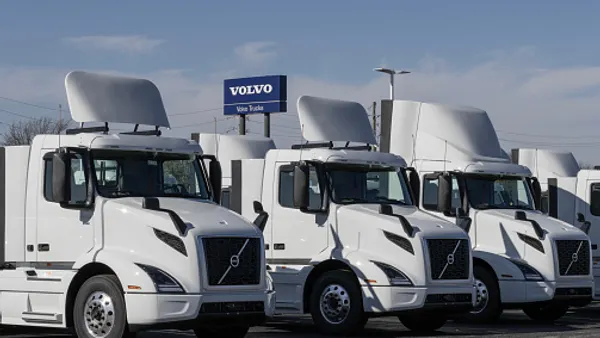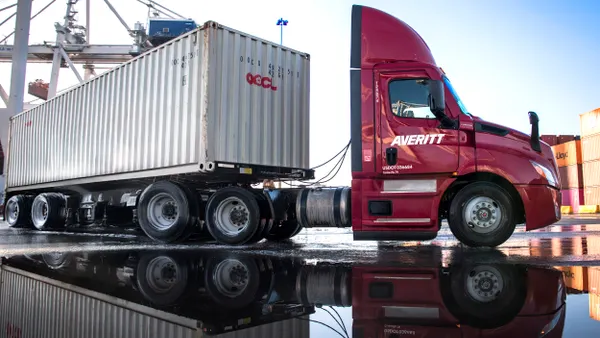Dive Brief:
- The van and reefer load-to-truck ratios saw month-over-month (MoM) growth in May with the van ratio growing by 22% and the reefer ratio growing by 10%, according to DAT. The ratio can be used to measure demand in the spot market: the higher the number, the harder time a shipper will have finding a carrier.
- Flatbed's load-to-truck ratio, meanwhile, was down 43% from April into May.
- All three trucking modes saw decreases in their load-to-truck ratio compared to May 2018. Van was down 54% year-over-year (YoY), flatbed was down 85.7% YoY and reefers slid by 60%. The Electronic Logging Device mandate likely accounts for these large differences, according to Stephen Petit, a spokesperson for DAT. Enforcement of the mandate began last April, resulting in a temporary downturn in trucking capacity and an increase in the load-to-truck ratio.
Dive Insight:
May ended on Memorial Day weekend, which created a shorter work week and a smaller window to move loads.
"That pushed load-to-truck ratios higher, meaning shippers and brokers had a harder time finding available trucks," Pat Pitz, the editor of DAT solutions, wrote in a blog post.
As a result, 44 of the top 72 reefer lanes increased their rates heading into Memorial Day weekend, according to DAT.
Meanwhile, the Cass Freight Index declined YoY for the fifth straight month in April, the most recent numbers available. The Cass Freight Index is largely made up of trucking freight, but can also include other modes like air freight. In its monthly report, Cass called the decline a sign of "possible economic contraction," with analysts saying they don't want to "turn completely negative in our outlook" but are now more cautious.
Two big indicators Cass is watching are the "severe" decreases in airfreight volume, with Asian countries especially impacted here, and the declining numbers in rail volume coming from auto and building materials. But the strength in trucking is a positive sign, according to Cass.
It also said the risk surrounding the trade war between the U.S. and China has risen, though it still expects the two countries to reach a deal.
"Bottom line, the data in coming weeks will indicate whether this is merely a pause in the rate of economic expansion or the beginning of an economic contraction," Cass wrote.














